Stacey D. Atkinson's Blog, page 4
August 29, 2014
How to be fearless (in your writing)
Today I floated above the city in a hot air balloon. How did someone like me, who's afraid of heights and gets motion sick, do such a crazy thing?
Sometimes the universe presents you with a gift and you have to be aware enough to grab hold of it. That's what happened to me last week when my letter carrier arrived at my door and asked me if I could accept a package on behalf of my neighbour.
"Sure," I said. "Why not."
About a hour later, my neighbour Norm came over and knocked on my door. He'd found the note in his mailbox saying I had a package for him. I handed him the box and since we hadn't seen each other in a few weeks because of summer vacations, we began to make small talk. Then he happened to mention his plans for the weekend, to attend the Festival de montgolfières de Gatineau, otherwise known as the Hot Air Balloon Fest.
"Wow," I said. "I've always wanted to go, ever since I moved to the city 10 years ago. But I'm too scared to go up in one of those balloons."
"I go every year," Norm said. "I volunteer as a photographer."
There was a glint in my eye and Norm saw it.
"You wanna come with me? I can get you in. Do you like to take pictures?" he asked.
"I love to take photos...and I've got all the gear, too."
"Done," he said. "Let me call the organizer right now and confirm you're in."
Over the next few days, I began to regret my hasty decision to volunteer for the festival. I learned that I'd have to get up at 5 a.m. to photograph the morning flight and that I might be asked to take a balloon ride and photograph the festival grounds from the air (gasp!). I panicked and thought about not showing up for my shift, but as the week passed by, I resolved to suck it up and make good on my word.
Friday arrived and I made my way to the festival in the early morning light. I was given a volunteer orientation and asked to photograph the balloons taking off in section B...and then to jump on board the Skyward balloon and take pictures from above. I began to get nervous and my knees buckled. I thought about running away but finally settled for a jog to the porta-pottie for a nervous pee.

I watched as the crew inflated the massive yellow and red balloon with spurts of flames from the four gas burners. Everyone was excited and ready to launch, and then finally we all jumped into the basket. It was now of never. We received the thumbs-up from the flight director to take off. Before I even realized it, we gently lifted into the air with the moving wind. I watched as the people on the ground became small figurines, waving as we drifted away. I took photos of the balloons, the crew, and the festival grounds. I looked out at the horizon and shot the cityscape and winding river. I looked around at the other people in the basket and saw all their smiling faces and realized I was smiling, too.

Just like that, I was floating hundreds of feet above the city and loving it--no vertigo, no motion sickness. It was a gentle, steady ride the whole way. A truly Zen experience. Then I was struck by how closely I came to not taking this ride at all. How I almost let my doubts and fears and "what ifs" keep me grounded. I had imagined what the ride would be like (i.e., nauseating) and I'd convinced myself it was true, when in fact it was just a scenario I'd made up in my head. What I had imagined the ride to be could not have been farther from the truth.

So, fellow writers, I urge you to take chances in life and in your writing. Try something new, knock down those artificial boundaries about what you can and can't do or write about. Nothing is more damaging to the psyche than dull routine. Step outside your comfort zone from time to time and live a little. I promise, it will give you a whole new perspective on things and so many new ideas to write about.
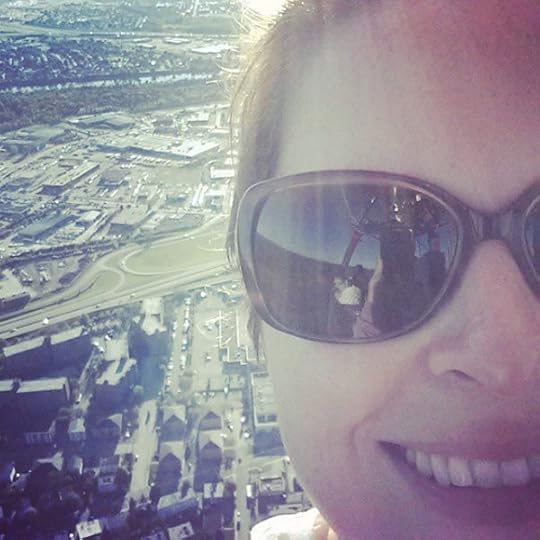
Stacey D. Atkinson is a freelance editor and author of Stuc k , a novel she published via her independent company Mirror Image Publishing.
August 22, 2014
Why book clubs matter (and make you a better writer)
I miss my book club. It's been three months, which is to say "three books ago," since I attended a meeting and I am excited to get back to reading and reviewing new books. Summer was a bit of a whirlwind with all the backyard BBQs, vacation time, and general laziness, but now that September is almost here, it's time to get back on track.
If you have a chance to join a book club, I highly encourage you to do so. I get so much more out of mine than I ever thought I would, including new friends and new perspectives on writing.
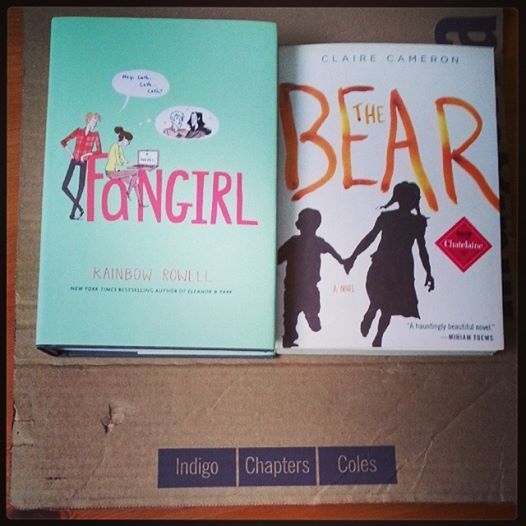
After a bit of trial and error with different clubs, I ended up joining an IndigoReads book club run by my local Chapters store in Ottawa. We meet the first Thursday of the month and generally read newly released books by major publishers. For me, as an indie author, I get so much value out of reading these books because I am constantly analyzing what makes a bestseller, and I know that the only way for me to be a better writer and publisher is to stay current with market trends.
As I said, there are many reasons to join a book club, especially if you are an aspiring writer. If you join your own local club, you can probably expect the following to happen:
make new friends with book clubbers and bookstore staff
make time to read each day to finish your book on time (reading = happy)
expand your mind by reading books in genres you wouldn't normally read
expand your book library
learn new writing techniques
learn new ways to market and promote books, such as cover designs and book club kits
have lively debates about characters and story endings
be inspired to write more
be proud at the end of the year when you realize how many books you've read
laugh, smile, and have fun
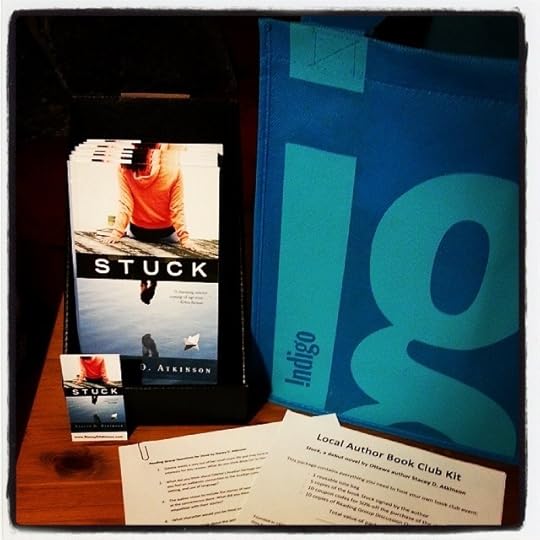
Happy reading!
Stacey D. Atkinson is a freelance editor and author of Stuck, a novel she published via her independent company Mirror Image Publishing.
August 15, 2014
Looking for new character ideas? Try observing the people around you.
This week I am on vacation far from home. While I'm doing my best to relax and not think about my impending to-do list, my mind is still working and observing people all around me. Maybe it's easier to notice the differences in people when you're away from home, since their clothes, accents, and general mannerisms are naturally different than the ones you're used to seeing every day. All that to say, being away from home is a perfect way to gain new ideas for characters.
The next time you're looking for inspiration to create a truly unique and memorable character, here are some traits to look for in the people you meet or pass by:
Language: Many communities have their own unique expressions and accents, and if you really listen when people talk, you'll pick up interesting tidbits to use in your own book. And always make sure to keep an eye out for the outliers, the extroverted comedian-type people who have a unique way of seeing the world and expressing their feelings. Some great expressions I overheard this week were:
“Geez, bye, what 're you doing there?”
“Come on, let’s go...Hup! two, three, four.”
Body language: Observe how people walk down the street. Do they shuffle their feet, hang their head, or swing their arms? Are they lean, fit, and athletic, or are they short and stooped with a pot belly? When they speak, do they look you in the eye or look away? Do they cross their arms or pat you on the shoulder?
Dress: What are the local fashion trends? Are people wearing hoodies, long shorts, and joke T-shirts? Do the older women have perfectly rounded, curled hair, and do the older men wear white sneakers? Are the little girls wearing neon bracelets and high ponytails? Are the little boys wearing plastic warrior masks and play-fighting with swords?
There are character ideas all around you—you just have to observe them. And since people are everywhere, finding writing inspiration can be as simple as going for a walk and people watching.
Good luck with your writing!
Stacey D. Atkinson is a freelance editor and author of Stuck, a novel she published via her independent company Mirror Image Publishing.
August 8, 2014
What to do when you can't finish writing a full-length book
It's not easy to write a book. It takes incredible determination to type 80,000 words into a manuscript. A true labour of love, your book is an expression of your thoughts and creativity, put out there into the world for everyone to see. So what are you to do when you really want to finish writing your book but you just can't seem to get to the finish line?
I've talk to many authors who have great ideas and ambition for writing a novel, but they just can't finish writing their book. Sometimes it's a lack of confidence, which can be overcome with time and more writing practice, but often times it's because they become stuck at some point in the writing process. And from that point on, every time they go to sit down in front of their computer to write, it becomes a chore and they risk loosing interest altogether. But it doesn't have to be this way. Here are some options to consider to jump start your writing project all over again.
Hire a developmental or structural editor
One way to get unstuck in your writing process is to hire a structural editor who will read what you've written, assess the plot and characters, review the order of the chapters, and really think about how to give your book a strong beginning, middle, and end. This particular type of editing requires someone who can see the forest for the trees, pointing out the strong and weak points of your manuscript, helping to reinvigorate your entire writing process.
Write a short story instead
Writing short stories is an art form in and of itself, and it just might be your ticket to actually finishing what you started. If you are having trouble turning 20,000 words into a full-length novel, maybe it was never meant to be. Maybe you are really writing a short story, which also has a beginning, middle, and end, just with a shorter arch. If this interests you, take a look at Kindle Singles, "compelling ideas at their natural length," to be inspired by the short story market.
Write a book of short stories
If you have lots of ideas and characters that you want to explore, and if you enjoy working on shorter pieces of work, then maybe you are destined to write a book of short stories. What's great about this is that your book will have the appearance of a full-length novel, perhaps 250 pages or more, but it will contain 10 or so short stories. Even better, if you can write with this intention in mind, you can plan a narrative thread to connect the stories, to present a comprehensive collection for your readers.
Join a writers' group or attend a writers' conference
Don't underestimate the power of group think. If you have a great story idea but are stuck on the ending, you can join a writers' group and participate in a critiquing session. You might be a little nervous at first to present your work in front of strangers, but you have to know that everyone is there with the same goal--to finish their own manuscripts and to help others do the same. You can usually find out about local writers' groups from your library, or, if you can spare some vacation time, you could sign up for events like NaNoWriMo, the National Novel Writing Month, which holds a writing retreat and workshops.
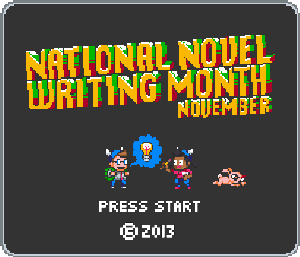
Source: NaNoWriMo, the National Novel Writing Month
In the end, whatever you do, just keep writing. You will get better at it and gain more confidence the more you work at it.
Stacey D. Atkinson is a freelance editor and author of Stuck, a novel she published via her independent company Mirror Image Publishing.
August 1, 2014
What is a book index and why do you need one?
For all you authors out there writing books on business, travel, self-help, etc., have you considered adding an index to the end of your book? Maybe you've never given it much thought or even noticed an index before, which is fine because in essence, a good index just does its job in a seamless and useful way.
An index is an alphabetical summary of your book's contents, as well as a location guide--something your readers will appreciate when they get to the end of the book and try to remember where they saw that reference to $10 huts on the beach in Bali. Sure, you have a table of contents to give your book its overall structure, but the index in a comprehensive way to show the relationship between the content.
If you choose to add an index to your book, I do not recommend that you go it alone. It's part art, part science, and best to hire a professional indexer. It's not that you can't do it as an author, it's just that it takes several weeks to compile an index and a lot of meticulous work, which is time better spent for you to do authorly things, like plan your book launch or start a social media campaign.
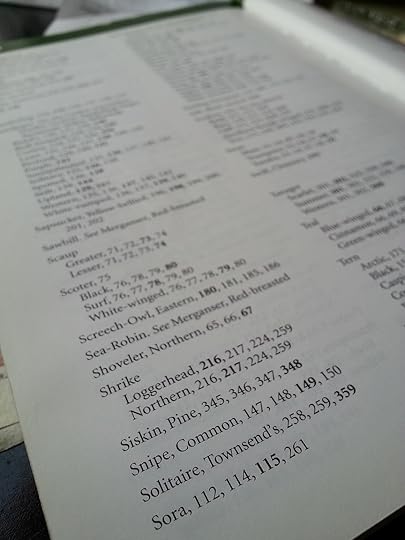
To give you a sense of the steps involved in indexing, here's a typical month(s)-in-the-life of an indexer.
The indexer will:
- receive the manuscript from the author/editor, familiarize him/herself with the content, and decide on a format for the index.
- read the manuscript and highlight concepts for possible inclusion in the index.
- select the terms for the index and begin compiling a list with qualifiers (descriptions) and locators (page or section numbers).
- review all entries, page by page, to make sure there are no mistakes.
- arrange terms alphabetically.
- edit for repetition, errors, and format.
- submit the index to author/editor and make changes based on feedback.
(Note: Based on course material from the editing certificate program at Simon Fraser University)
So you see, indexing is not for the faint of heart. It takes an ability to quickly read and understand information, and to have a sixth sense on key terms readers will use to look up information. If you want to know more about indexing, check out the websites for the American Society of Indexers and the Indexing Society of Canada.
Stacey D. Atkinson is a freelance editor and author of Stuc k , a novel she published via her independent company Mirror Image Publishing.
July 25, 2014
What I'm going to do on vacation to make me a better writer and editor
Can. Hardly. Wait. For. Vacation.
In a week, I'll be heading back home to the Maritimes to get my fill of salty air, ocean swimming, family time, really friendly people, and hammock slothing. I've also added a few extra days onto the trip to take the long way home, driving around the Gaspé Peninsula for some Quebec maritime culture, sightseeing and whale watching. Needless to say, it's going to be amazing, and a perfect recharge for the mind and body.
While I refuse to make any concrete plans for my vacation, I do have three specific intentions in mind that will be my guiding principles for my time off. I believe that by doing nothing, something great just might come from it.

1. Read for fun.
I can't wait to read the Divergent trilogy. Yes, I said it. Divergent + 3 books. Being a dystopian, sci-fi, young adult series, it's exactly what I need and want to read on vacation. Perfect for the beach, cottage, and porch chair.

2. Sit and do nothing.
We've all heard the benefits of meditation and how a clear mind can help with problem solving, but it is rare (at least for me) to not be thinking about anything and everything all at the same time. I am purposefully going on vacation to have long bouts of nothingness, where I just sit, lie, swim, or walk with an empty mind.
3. Celebrate.
Life can get unnecessarily busy and frantic, especially when you run your own business. So it's my goal for vacation to go with the flow, be open to impromptu and unplanned experiences (gasp!), and to make sure to have fun. A couple of for-sure fun times will be celebrating Acadian Day on the Pointe-du-Chene Wharf; going to St. James' Gate pub to listen to the best, best, best singer/songwriter Chris Colepaugh play some tunes; and sitting around a beach bonfire with guitars and night stars.
I hope to return to Ontario feeling invigorate, full of new ideas, optimism, and patience.
Stacey D. Atkinson is a freelance editor and author of Stuc k , a novel she published via her independent company Mirror Image Publishing.
July 18, 2014
How not to waste time and money when self-publishing your first e-book: a 10-step process
For those of you self-publishing your first e-book, you may be wondering about all the steps involved, from writing the first draft to seeing the book for sale on Amazon.com. It's not a complicated process, but it is a process nonetheless, and the steps need to be done in the right order, or else you'll find yourself wasting time and money.
In general, you can lump all the steps into three categories: writing, editing, and publishing. If you are self-publishing, you'll be the project manager and will have to know when to do the work yourself, and when to hire help. You only have one shot to make a first impression with your book, so respect the time and money needed to do it right, and write the best damn book you can.
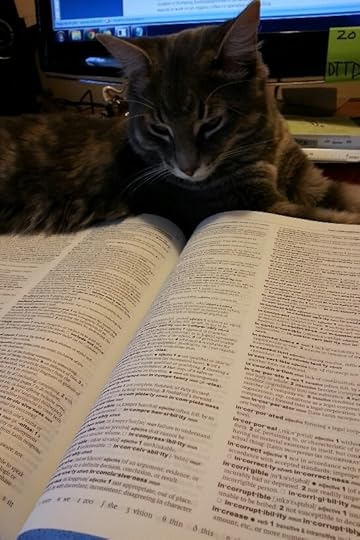
Javier, The Cat Editor, says "Use a dictionary!"
10-Step Process to Self-Publishing Your First E-book
1. Write, re-write, and re-write again until your book is the best it can be.
2. Hire an editor to do a structural edit and/or copy edit of your book.
Structural editing is a review of the book storyline, character development, chapter order, etc.
Copy editing is a review of spelling, punctuation, grammar, and consistency of style.
If you don't have a lot of money to spend, turn to work bidding sites such as Elance.com.
3. Make the changes suggested by the editor and prepare a new draft of your book.
4. Hire an editor to proofread your final draft.
Proofreading is fixing the small, sneaky errors in the text and formatting (e.g., misplaced comma, wrong heading font, wrong URLs)
Your eyes will be so used to reading the manuscript that you won't be able to detect these final errors.
5. Make all the changes from the editor and re-read your book one more time.
Don't make any further changes, just look for errors.
6. Hire a designer to create an e-book cover for you.
7. Apply for an ISBN to register your book. You'll need this for your copyright page and to sell the book.
In Canada, you apply at Library and Archives Canada; in the USA, you apply at Bowker.
8. Hire an e-book developer to format your book into a mobi file (Kindle) and an epub file (all other retailers).
9. Test the files on as many devices as you can: e-readers, tablets, and phones.
10. Set up your vendor accounts to sell your book online.
You can aggregate with one vendor (e.g., Book Baby, Smashwords) or set up separate accounts with Kindle Direct Publishing, NookPress, Kobo Writing Life, iTunes Connect for iBooks, etc.
And the bonus step:
11. Promote, promote, promote! Nobody will buy a book they don't know exists.
If you follow these steps in this order, you can minimize the amount of back and forth you do with your editor, designer, and tech support, and you won't waste your time and money redoing any work or making last minute changes.
You can publish a book without following all these steps. However, in my experience, I can guarantee that if you try to rush the process and go at it alone without a team to help you, you will have yourself a book with errors and an unprofessional look that will turn off your readers.
Happy e-publishing, everyone!
Stacey D. Atkinson is a freelance editor and author of Stuck, a novel she published via her independent company Mirror Image Publishing.
July 11, 2014
Listening to music + happy place = creativity
This week I had the great fortune to spend a few days (and nights) at the RBC Bluesfest in Ottawa. Unlike its name, Bluesfest doesn't have much to do with the blues, but everything to do with showcasing great Canadian and international music. I saw some iconic bands perform and learned about some new ones along the way. But above all, seeing those musicians up there, pounding it out on the guitar and singing their hearts out, really inspired me to get off my butt and get back to creative writing.
So in the spirit of Bluesfest and in celebration of great music, here are some amazing bands I saw this week that are sure to inspire your next writing project!
Lovely, happy people. It's hard to believe Tegan and Sara have been performing together since their first demo tapes in 1997. They've certainly perfected how to write emotional and thoughtful songs about love and life that will put you in your happy place when you listen to their sweet harmonies. Canada's best duo, by far.

Photo by Lindsey Byrnes from Teganandsara.com
What can I say -- she loves her art and her fans, which makes her show simply irresistible. A mere 27,000 people attended her outdoor concert to get a boost from the Queen of Performance herself. It's a spectacle that everyone should experience at least once.
Don't let their laid-back stage presence fool you -- these guys will rock your socks off. Seeing Violent Femmes live was like being at a high school party all over again. I sang along to every song -- something I haven't done in 20 years -- a complete amazement to me that all those words were still stored in my brain after all this time. There's just something about those lyrics...
A sweet surprise to discover amongst all the other Bluesfest talent, the guys of Vintage Trouble are superstars. Who doesn't like a well-dressed man in a suit, sliding across the stage, singing about his "Pelvis Pusher."
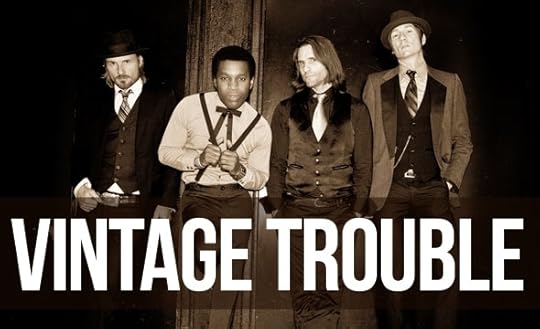
Vintage Trouble photos by Peter McCabe & Lee Cherry, interview with Outlineonline.co.uk
He's just as funny and wacky as when he's on The Voice. If you get to see Blake Shelton live, he's truly entertaining and his songs are fun and easy to sing along to.
Beautiful people, beautiful songs and lyrics, this country band will inspire you through and through. Surprisingly, they also have an impressive stage show of lights and video to completely capture your attention.
These guys lit up the night with their strobe lights, hard-rocking beats and raucous crowd talk. Adventure Club is Montreal dub-step duo, Christian Srigley and Leighton James. Here's a free download to their remix song Max Elto - Shadow of the Sun (Adventure Club Remix).
Listening to music + happy place = creativity :)
Stacey D. Atkinson is a freelance editor and author of Stuck, a novel she published via her independent company Mirror Image Publishing.
July 4, 2014
Editing tips for travel writers and bloggers
Over the past year, I've had the pleasure of working with some great travel writers on everything from blogs to books to media Qs&As. It's always a good idea to have an editor review your work before it goes live. An editor can find any sneaky little errors that were missed by your tired eyes, fact check place names and URLs, and in the case of blogs, ensure a consistent style week to week. But for those of you out there who are your own editor, here are some tips on creating your own style sheet, which is guaranteed to make your travel writing and blogging easier.
A style sheet is a great device to help you remember your decisions about mechanical issues -- spelling, capitalization, currency, numbers, hyphenations. That way, when you start your next blog entry, you don't have to Google everything all over again. You'll remember that you already decided you prefer Unesco World Heritage Site over UNESCO World Heritage Site, or art deco over Art Deco, or you understand when to use awhile vs. a while, or the correct spelling of Reykjavik, or your preference for 58 euros over 58 €.
Having accurate, well-written content with a consistent style will establish you as a professional writer and blogger. Your readers will appreciate it, and your freelance writing career will benefit from it, too!
Here's how to create a style sheet:
1. Open a new Word doc and divide it into 6 rows and 2 columns.
2. Add one heading in each box within the first 4 rows and 2 columns: ABC, DEF, GHI, JKL, MNOP, QRS, TUV, WXYZ.
3. Add one heading in each box of the remaining 2 rows and 2 columns: Numbers; Currency; Punctuation; Times, Measurements & Dates (or use whatever headings make most sense to you for the things you want to keep track of).
This is how your style sheet will look, and you can keep adding to it and referring back to it each week.
ABC
Adriatic Sea
check-in (noun)
checking in
DEF
day-to-day (adj)
euros
First Nation
GHI
GPS
hotspots
Internet
JKL
jet lag
jet-lagged
lookout
MNOP
Middle East
New Age
off-season
QRS
Reykjavik
staycation
sub-Saharan Africa
TUV
takeoffs
Unesco
vaccine
WXYZ
Wi-Fi
Yellowstone National Park
zip line
Numbers
9/11
24/7
401k
Currency
$1,000 (comma)
$333 US (not USD)
Can$20 or CAN$20
Punctuation
no serial comma
italics to stress words
bold important phrases
Time, Measurement & Dates
1960s (no apostrophe)
a.m., p.m.
12th-century church
There you have it! By spending a little bit of time upfront to create your style sheet, you can save precious time down the road when you're writing under a deadline and can't remember to hyphenate or not to hyphenate.
Happy writing, everyone!
Stacey D. Atkinson is a freelance editor and author of Stuck, a novel she published via her independent company Mirror Image Publishing.
June 27, 2014
A minimalist's approach to writing and editing
Last night I went to Chapters bookstore to see a talk by Josh and Ryan of The Minimalists. They are two young guys from Montana who climbed the corporate ladder only to become unhappy, and then finally found happiness by quitting their jobs and living with less stuff. They now write books and tour the country to spread their message about finding passion and purpose in life and how living with less stuff can make you more happy. So it got me thinking, how could the minimalist mind make me a better writer and editor?
Living a less complicated life can help unclutter your mind. When you have fewer responsibilities and possession, you have less debt and stress, which ultimately frees up the mind to think. And nothing is more important to a writer and editor than being able to create, deliberate and contemplate word choices.
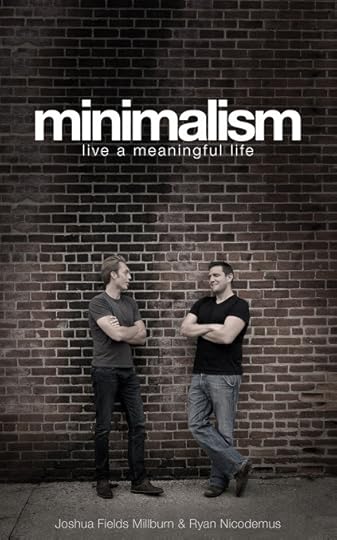
Photo by Adam Dressler, Design by +Spyr Media
A minimalist will look at his possessions and say, "Does this item add value to my life?" and if the answer is no, then give it away. This is an excellent rule for writers and editors, too. "Does this word/sentence/paragraph add value to my book?" and if no, get rid of it. A minimalist would also say, "Everything I own should have a function," which could translate to "Every word has a function (e.g., noun, pronoun, verb), and if it's not doing its job then fix it or toss it out."
Here are some writing and editing tips inspired by a minimalist mind:
- Get back to basics. The most minimalist of writing tools are a chair, desk, lamp, paper, pencil, laptop. Josh and Ryan actually went to a cottage in the woods for four months to write their new book. They had no distractions, just focus: brain, fingers, type, create.
- Clean your desk. Piles of papers, to-do lists, file folders, business cards, and general crappola are not going to help you work harder or better. Your desk is a reflection of your mind - so unclutter it.
- Clean your desktop. Too much social media in a day and other nagging Word and spreadsheet files open on your computer can send little waves of stress coursing through your veins, leading to distraction. Don't get stuck in a wormhole, focus on one task at a time until it's finished.
- Give yourself space to think. Get up from your chair and pace the hall. Go for a walkabout through the neighborhood. Let your mind settle and come to creative solutions to problems. You need to give yourself time to see the forest for the trees. If the structure and message of your document doesn't make sense, there's no point spending all day in the weeds.
- Eat well. Don't stuff your face with coffee and sugar and expect a quiet mind. You may be on a deadline and need that extra energy to get through the day, but it's not worth the anxiety and stress that come with it.
- Less tinkering is the best editing. There are many ways to write the same sentence, so if the sentence works, let it be. Don't move the words around just for the sake of moving them around.
Happy wordsmithing, y'all!
Stacey D. Atkinson is a freelance editor and author of Stuck, a novel she published via her independent company Mirror Image Publishing.



